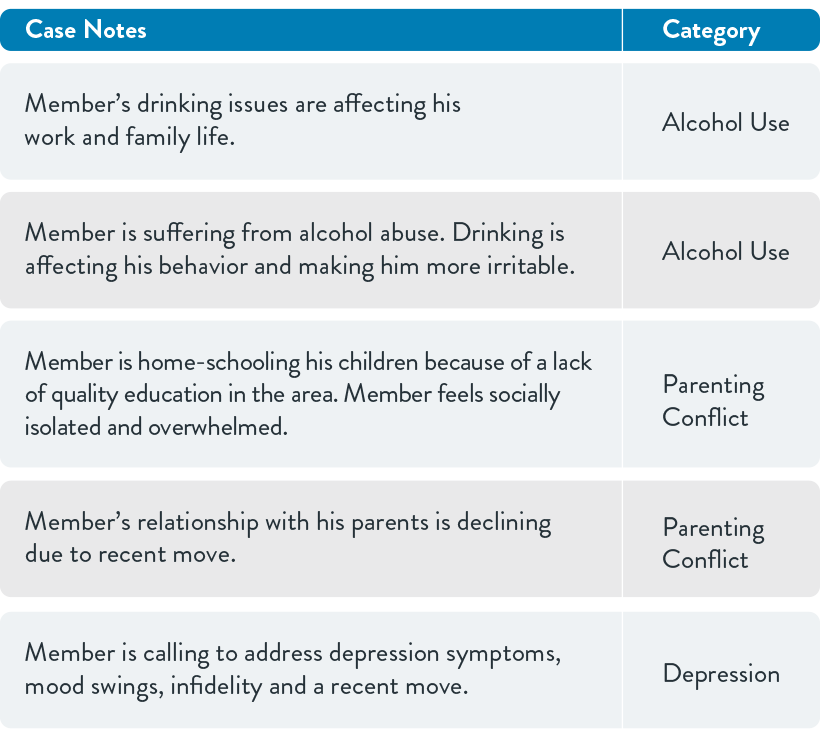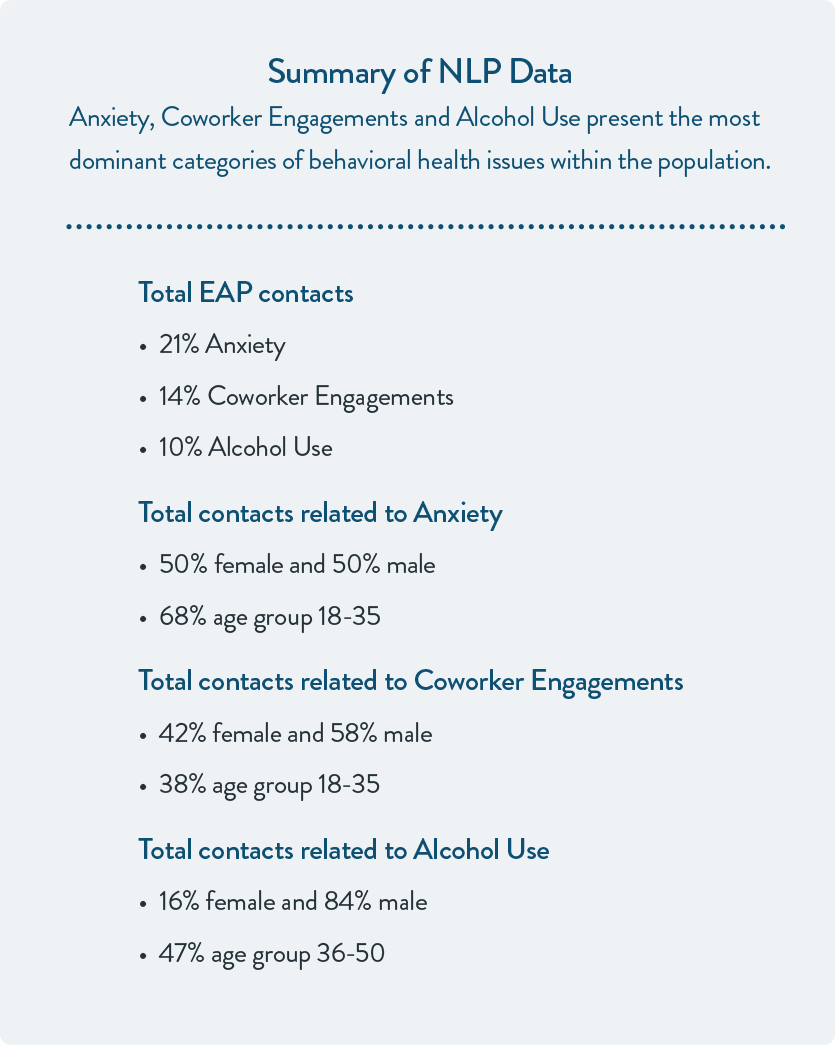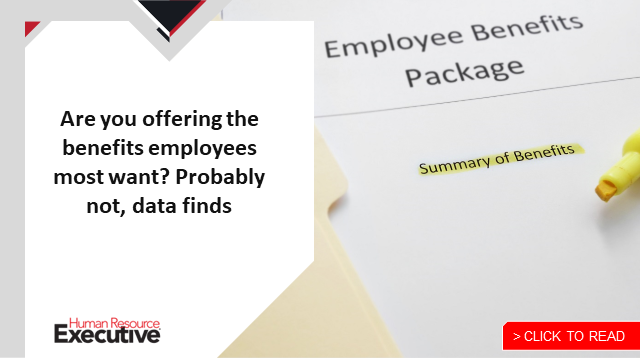Mental health continues to be a top priority for employers, yet employees are often hesitant to reach out for help due to the stigma that can surround these issues, concern for privacy or other related reasons. Oftentimes, when people contact their Employee Assistance Program, it is regarding sensitive, personal issues—so, it is important to make employees aware of available mental health resources and services, as well as how their privacy is protected. However, employers may ask what else can be done to identify areas where employees need support.
Compared to clinical issues where claims data is available for analysis, EAP reporting has been top-line, focused on broad issues, making it difficult for HR leaders to draw insights into the population’s needs. For example, one can tally how many people reached out to the EAP regarding stress or anxiety, but without more information, it is not possible to further understand the “why” behind those contacts. Without that, employers will struggle to take effective action to provide the help their employees truly need.
The emerging use of artificial intelligence techniques like natural language processing in data analytics can help HR analyze available information more effectively. By leveraging this approach, employers can get actionable information to make a difference for their employees’ mental health and wellbeing.
What is natural language processing?
NLP is a branch of AI that accurately understands and processes language. NLP enables the conversion of unstructured text data into a digital format that facilitates quantitative analysis. As a subset of machine learning, NLP can train itself to be better each time it runs, making the analysis more effective and insightful as time goes on. For example, companies like Health Advocate use NLP to identify a member’s clinical condition by analyzing text-based case notes whose contents would not otherwise be accessible.
When applied to the EAP, NLP can be used to identify how members utilize services in a way that was not possible before. The program is private and confidential, and reporting is protective of the employee’s identity; however, this approach allows for expansion beyond static measurements, providing a more in-depth understanding of the challenges members face.
Typically, the measurement of areas of concern or reasons for EAP encounters has been very generic. It might indicate that someone was calling due to family stress, but detail beyond that has been limited. With NLP, it is possible to uncover further information and drill down to why people are stressed, allowing HR to go beyond traditional reporting and enabling targeted interventions that have a true impact. It is important to note that this information is available to employers in aggregate—employees’ privacy is prioritized.
Figure 1 shows the NLP categorization of a sample of case notes of member contacts to the EAP.

Aggregating the data obtained through NLP across the population that engaged with the EAP provides an overall picture of the behavioral and mental health needs within the workforce, as shown in Table 1 below.

Leveraging NLP provides details on concerns within a population, quantifying the number of EAP contacts received in distinct categories and opening up the possibility to further engage employees in activities to improve their mental health and wellbeing.
Value to employers
NLP technology adds a new level of analysis that enhances the EAP by providing employers with targeted and detailed reports, while preserving member confidentiality. General topics are segmented into actionable and insightful elements, which allows employers to strategically modify their employee support programs based on the data-enabled understanding of the current needs of their workforce.
This innovative application of NLP permits HR to identify employees’ and family members’ behavioral health needs with real-time information, providing the potential to lessen workplace distress, increase workplace engagement, and reduce absenteeism and presenteeism, among other valuable benefits. By using NLP to better understand EAP interactions and employee needs, organizations can take action to increase overall productivity in the workplace, positively impact health outcomes, reduce incurred employer costs and increase overall perceived quality of life for employees and their family members.
Of course, enhanced reporting is of little value if it doesn’t lead to actions addressing the issues NLP can help uncover. Recognizing the sensitivity around mental health issues, an employer’s primary response is to prominently communicate the availability of help from the EAP program. Communications can target the specific areas of concern across the population identified through data analytics and enhanced by NLP analysis of member interactions, fostering awareness and motivating individuals with needs to reach out for help.
Understanding how the workforce as a whole is managing mental and behavioral health challenges can help employers implement more meaningful services and resources to support all of their employees. NLP technology enables employers to obtain a deeper level of granularity around issues their employee population is facing at this moment. HR leaders can use the data from these interactions to make impactful and immediate decisions and tailor supportive mental health services to improve the health status and work/life balance within their population. NLP offers employers the opportunity to focus on what is needed most right now, improving the value of their initiatives.
Value to employees
 With more expedient and in-depth data analysis, HR can quickly adapt EAP and related resources to get employees the help they need, when they need it, without delays. Consider recent incidents such as forest fires or floods. By leveraging NLP, HR can help business leaders immediately understand how these events are impacting their employees and provide targeted support. This flexibility and timeliness ensures that employees feel supported and cared for by their employers, leading to better outcomes and more cost-effective solutions.
With more expedient and in-depth data analysis, HR can quickly adapt EAP and related resources to get employees the help they need, when they need it, without delays. Consider recent incidents such as forest fires or floods. By leveraging NLP, HR can help business leaders immediately understand how these events are impacting their employees and provide targeted support. This flexibility and timeliness ensures that employees feel supported and cared for by their employers, leading to better outcomes and more cost-effective solutions.
Applying advanced data analytic AI techniques like NLP to Employee Assistance Programs and similar benefits can provide employers with in-depth insights previously unavailable. With this information, organizations can adapt their offerings to be more effective and impactful, improving productivity and reducing costs, while ensuring that employees and their family members have the specific mental health resources they need to support their wellbeing.
The post How data analytics can enhance EAP support appeared first on HR Executive.